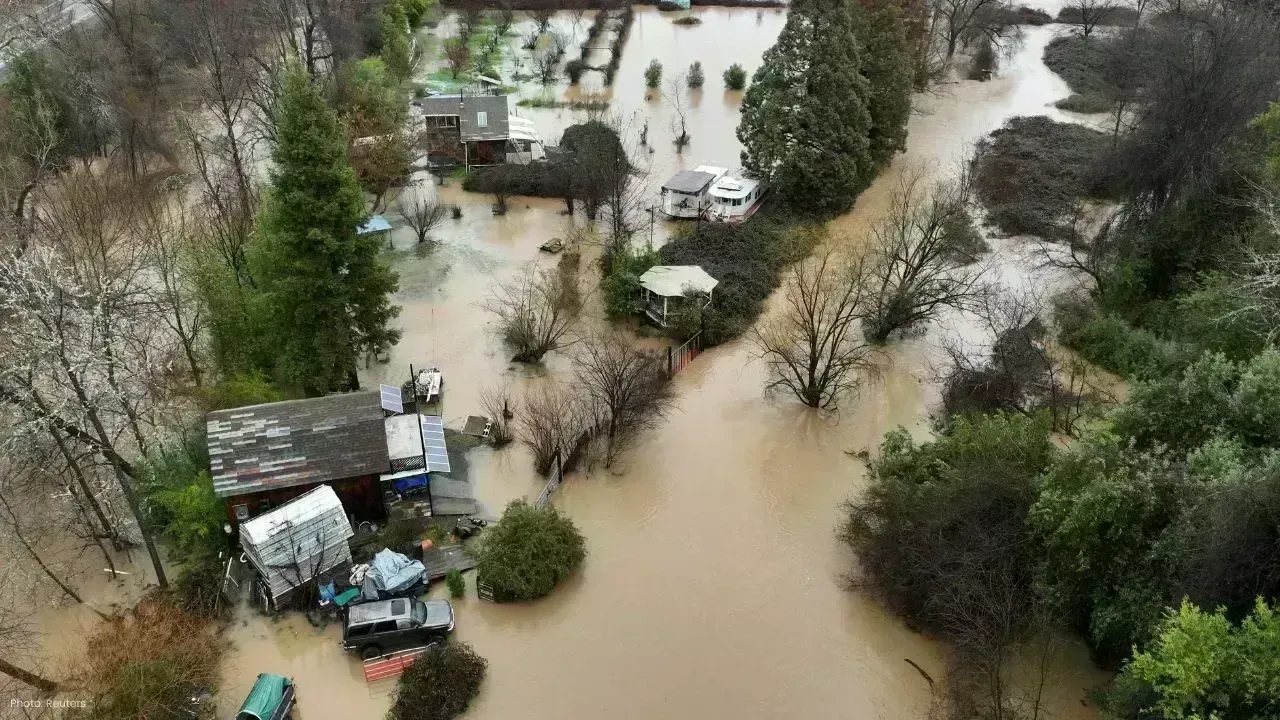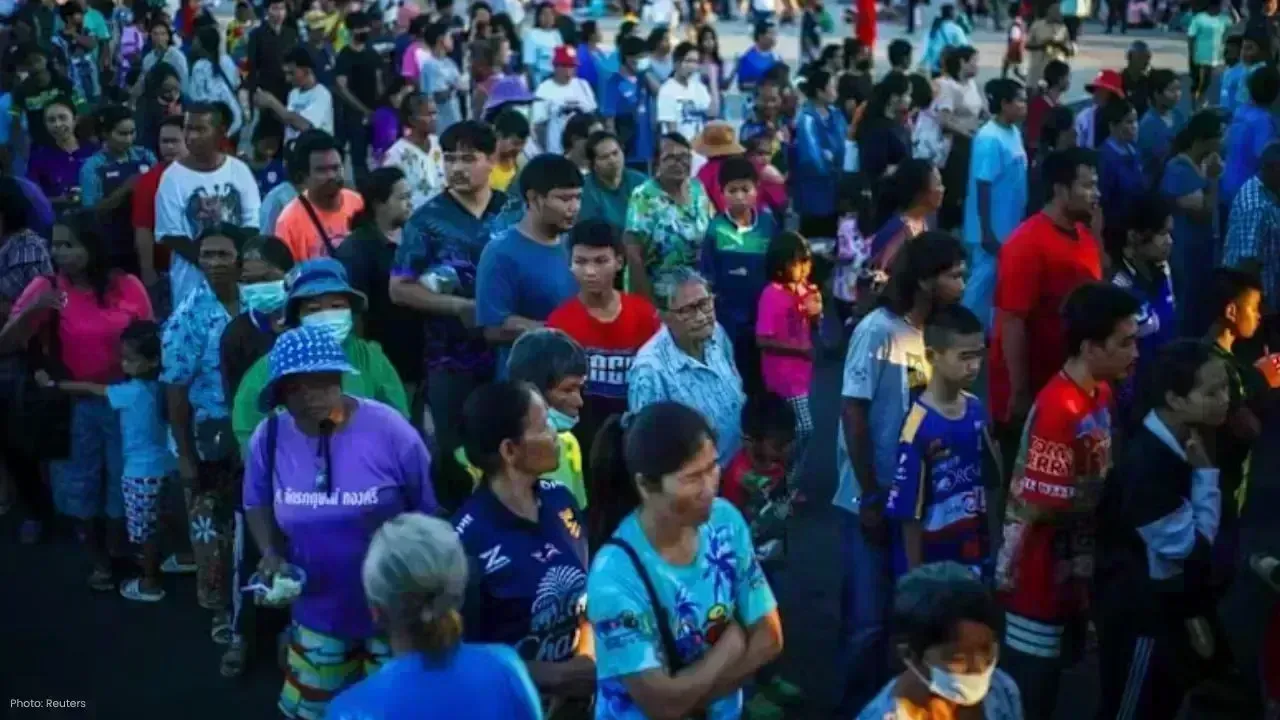You have not yet added any article to your bookmarks!

Join 10k+ people to get notified about new posts, news and tips.
Do not worry we don't spam!

Post by : Anis Farhan
For years, climate migration was largely treated as a theoretical scenario: scientists, activists, and policymakers warned of potential population displacements due to rising seas, extreme weather, and resource scarcity. In September 2025, however, the narrative shifted dramatically. What was once speculative has now become urgent. Governments, international organizations, and local communities are confronting the real and immediate impacts of climate-induced migration.
Extreme weather events across Asia, Africa, and the Americas caused mass displacements, leaving families without homes and communities struggling to adapt. From sudden floods in Bangladesh to droughts in parts of Africa, these events have accelerated movements of populations and highlighted gaps in preparedness. The scale and immediacy of these migrations have forced the issue from policy white papers into daily headlines.
The shift from “maybe” to “now” is not just linguistic—it reflects a growing recognition that climate migration is no longer avoidable but requires immediate planning, international cooperation, and adaptive solutions.
Several factors contributed to the acceleration of climate migration observed in September:
Extreme Weather Events: Floods, hurricanes, and wildfires intensified across multiple regions, destroying homes, infrastructure, and livelihoods. These events forced families to relocate temporarily or permanently.
Rising Sea Levels: Coastal communities, particularly in South and Southeast Asia, faced inundation of farmland and residential areas. Rising waters are displacing populations at a rate faster than previously estimated.
Resource Scarcity: Droughts and failing crops increased competition for water and arable land, pushing communities toward urban centers or regions with better resources.
Economic Pressures: As local economies falter under environmental stress, migration becomes a necessary strategy for survival.
Together, these forces underscore that climate migration is no longer a future concern—it is a pressing challenge demanding immediate action.
The human impact of climate migration is visible in multiple regions:
South Asia: In Bangladesh, unprecedented floods in September displaced thousands, prompting emergency shelters and humanitarian aid programs. Coastal erosion is increasingly rendering traditional settlements uninhabitable.
Sub-Saharan Africa: Prolonged droughts across Ethiopia, Sudan, and Somalia have devastated agricultural productivity. Rural populations are moving to cities in search of food, water, and employment, creating urban pressures.
North America: Hurricane activity along the Gulf Coast displaced tens of thousands, highlighting that climate migration is not confined to developing nations but affects wealthier regions as well.
Pacific Islands: Rising sea levels are forcing island nations to consider relocation strategies, including potential international resettlement, threatening cultural continuity and national identity.
These regional stories reveal that climate migration is not a single phenomenon but a complex web of socio-economic, environmental, and cultural challenges.
September’s developments have forced governments and international organizations to reconsider their approaches to climate migration:
National Strategies: Countries affected by displacement are developing domestic policies to manage internal migration, including emergency shelters, relocation incentives, and urban planning adjustments.
Regional Cooperation: Neighboring nations are collaborating to manage cross-border migration, share resources, and provide humanitarian support.
Global Initiatives: The United Nations and climate-focused agencies are emphasizing frameworks for climate migration governance, aiming to prevent conflicts and protect human rights.
Despite these efforts, gaps remain in funding, infrastructure, and enforcement, illustrating the urgency for coordinated international responses.
Climate migration introduces significant economic and social challenges:
Urban Strain: Cities receiving migrants face increased demand for housing, healthcare, and employment, often outstripping local capacities.
Cultural Integration: Rapid migration can strain social cohesion, especially when displaced populations differ culturally or linguistically from host communities.
Labor Market Disruptions: Migrants may face unemployment or underemployment, while host economies may struggle to integrate additional labor.
Food Security: Migration from rural to urban areas can impact agricultural output and increase dependence on imports, raising costs and reducing access to nutrition.
Addressing these challenges requires proactive planning, social support systems, and investment in infrastructure capable of handling sudden population influxes.
Technology has emerged as a tool to mitigate some impacts of climate migration:
Early Warning Systems: Advanced meteorological monitoring allows for better preparation and evacuation before extreme weather events.
Digital Mapping and Tracking: Tools that map migration flows help policymakers allocate resources efficiently and plan for long-term resettlement.
Climate-Resilient Agriculture: Innovations in crop technology and irrigation reduce displacement pressures in rural communities.
Remote Work Opportunities: Digital platforms can connect displaced populations with remote employment, reducing economic vulnerability.
While technology cannot prevent environmental drivers, it plays a crucial role in managing the human and economic consequences of climate migration.
At the heart of climate migration is the human story: families uprooted, communities disrupted, and lives transformed by environmental pressures. Humanitarian organizations are increasingly emphasizing the need for proactive, rather than reactive, interventions.
Shelter and Basic Needs: Immediate relief in terms of food, water, and housing is essential for displaced populations.
Education and Health Services: Maintaining continuity in schooling and healthcare ensures that migration does not compound social inequalities.
Long-Term Resettlement: Strategies for integration, skills training, and community building are essential for sustainable migration solutions.
The focus has shifted from temporary aid to long-term adaptation strategies that preserve dignity and opportunity for affected populations.
September’s events highlight that climate migration cannot be addressed in isolation from broader climate policies. Reducing emissions, investing in resilient infrastructure, and promoting sustainable development are central to mitigating future displacement.
Mitigation Efforts: Renewable energy adoption, deforestation control, and carbon reduction policies reduce environmental pressures that drive migration.
Adaptation Planning: Governments are creating infrastructure and social programs to support populations at risk of displacement.
International Agreements: Multilateral treaties can provide frameworks for migration, resource sharing, and environmental responsibility.
A comprehensive approach combining mitigation, adaptation, and migration governance is essential to prevent future crises from escalating.
The climate migration narrative has shifted from hypothetical discussions to immediate reality. September 2025 has shown that extreme events and environmental stressors demand rapid responses. Governments, NGOs, and communities must act together to develop strategies that are humane, sustainable, and equitable.
The next challenge will be scaling solutions globally, sharing best practices, and ensuring that migration does not exacerbate conflicts or inequalities. Climate migration is not a temporary phenomenon—it is a structural issue that will define global demographics, economic systems, and social policies for decades.
As the world acknowledges the urgency of climate migration, the focus must move from reactive crisis management to proactive planning, empowering communities to adapt while safeguarding human rights and dignity.
This article is based on publicly available data and analyses concerning climate migration in September 2025. It is intended for informational purposes and does not represent official policy recommendations.










Thailand Defence Minister Joins Talks to End Deadly Border Clash
Thailand’s defence chief will join talks with Cambodia as border clashes stretch into a third week,

India Raises Alarm Over Fresh Attacks on Hindus in Bangladesh
India has condemned recent killings of Hindu men in Bangladesh, calling repeated attacks on minoriti

Sidharth Malhotra & Kiara Advani Celebrate Baby Saraayah’s 1st Christmas
Sidharth and Kiara share adorable moments of baby Saraayah’s first Christmas with festive décor and

South Korea Seeks 10-Year Jail Term for Former President Yoon Suk Yeol
South Korea’s special prosecutor demands 10 years for ex-President Yoon Suk Yeol on charges includin

Salman Khan’s Exclusive 60th Birthday Bash at Panvel Farmhouse
Salman Khan to celebrate his 60th birthday privately at Panvel farmhouse with family, friends, and a

Dhurandhar Breaks Records with Rs 1006 Cr, Becomes Bollywood’s Biggest Hit
Dhurandhar rakes in over Rs 1006 crore worldwide in 21 days, becoming Bollywood’s highest-grossing f